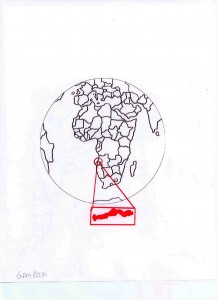THE GAMBIA
A. THE COUNTRY
The Republic of The Gambia is a narrow country in Western Africa with
borders that roughly correspond to the path of the Gambia River. It is
the smallest country on mainland Africa. Government is a civilian
multiparty democracy that tightly controls political and media activity.
The economy is that of subsistence agriculture and dependence on
groundnut cultivation, tourism, foreign aid and the “grey economy” over
the porous border with Senegal. Remittances from Gambians overseas
boost the economy.
B. THE PEOPLE
The population is ~1,700,000 and official language English.
There are over 25 ethnic groups that are very intermingled.
~42.5% are Malinke, ~5.9% Atlantic, ~4.7% Jola, ~12.6% Wolof, ~17.3%
Fulani/Fula, ~9.9% Soninke/Serahule, ~10.1% Other sub-Saharan African,
~1.7% Other.
C. RELIGIONS AND CHRISTIANITY/PENTECOSTALISM
There is relative religious freedom. Islam is dominant, but the
traditional Gambian expression is a gentler version compared to that of
Libya and Saudi Arabia.
~89.49% are Muslim, ~5.6% Ethnoreligionist, ~4.48%`claim to be
Christian, ~0.35% Baha’i, ~0.07% Non-religious, ~0.01% Buddhist.
In the Christian category:
~2.77% are Catholic, ~0.71% Independent, ~0.58% Protestant, ~0.25%
Unaffiliated, ~0.13% Anglican, ~0.04% are considered “marginal”.
Evangelicals represent ~0.8% of the population.
Charismatics represent ~0.9% and of those ~0.4% are Pentecostals.
Donna Siemens
References:
http://en.wikipedia.org
Operation World, Jason Mandryk. Colorado Springs: Biblica Publishing, 2010.

